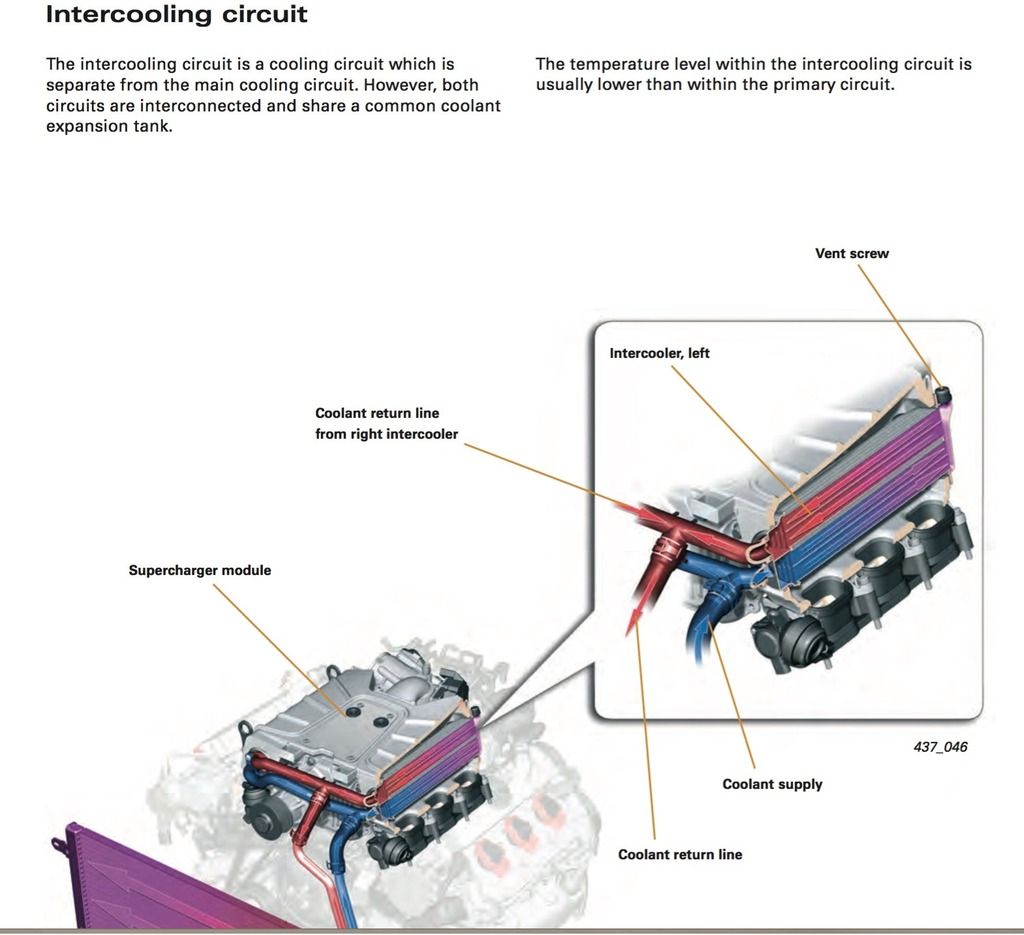
Originally Posted by
Lamprey

Perhaps I worded that poorly. I'm saying that I think that divorcing the systems would have a greater gain than a higher flow pump.
The caveat I put in there (which is probably the confusing part) is that once the system warms up, that per perhaps divorcing wouldn't provide as much of a gain over a high flow pump. I could be completely wrong and no matter the situation the pump has a greater gain than divorcing the systems. That's why I was curious to see if there are any numbers to show if one is better either way. I can guess that it's a wash and it doesn't really matter, but still curious..

According to the study guide, and from I can see on the actual car, there is only a small place the engine coolant and supercharger coolant mix. That's basically the expansion tank; to the point that the supercharger loop would pickup a very minimal amount of engine coolant heat. It's a small enough amount, that divorcing the systems has a minimal impact. The study guide is VERY clear about this (see below).
The side effect of divorcing the systems is that you won't know if you lose the coolant in the S/C loop. Combine those two factors, and it's not worth it to me.
You can see the one place the systems or loops mix below (bottom left-hand corner). The intercoolers are T and V, the supercharger heat exchanger is R, and the expansion tank is B.

If you're not sure about this, read the first few lines of the below excerpt from the study guide a couple of times. The key take aways should be that the circuits are considered separate, and the temps typically run cooler in the intercooler circuit because of that.














 Reply With Quote
Reply With Quote Sold
Sold








Bookmarks